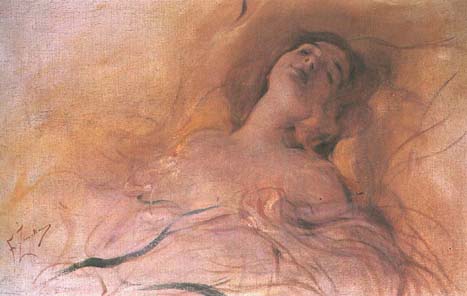Dreamscapes
The Poetry and Science of Dreams
They can be inspirational and enlightening, frustrating and disturbing, insanely disjointed and just-plain wacky. They mix our pasts with our present, distort the boundaries of place and context, and obliterate the lines between reality and fantasy. Sometimes they bring us great pleasure, sometimes unexpected answers to tough problems. Most of the time they are instantly forgotten. Other times, they are so terrifyingly intense, they almost make us dread going back to sleep.
The experience of dreaming is, without a doubt, the most mysterious aspect of our day-to-day existence. We may live in a concrete, predictable world in the daytime; but at night — when we fall asleep and dream — anything can happen. Dreams are totally unreal, yet they are an inescapable fact of life. They hint that there is a little more to us than we really know; more going on inside of us than the conscious thoughts and emotions that flow through our minds when we’re awake.
Open to Interpretation
Human curiosity about dreams goes back a long way. Many primitive cultures believed that the soul actually slipped out on its own during sleep to make brief nighttime excursions; so dreams were simply what your disembodied spirit had been up to while you were out. In the ancient world, dreams were considered to be inspired mainly by the supernatural; they could carry messages from the gods or foretell the future. Priests and soothsayers were employed to interpret them and reveal their hidden meaning. Dream incubation was a frequent practice, in which people would sleep in a temple or sacred spot in order to receive divine inspiration in dream form. The Greeks built temples called asclepeions (after Asclepius, god of medicine) where the poor of health came to spend the night, in the hopes that their dreams would guide them out of their maladies.
Aristotle was among the first to look at dreams from a rationalist perspective, studying them strictly as natural phenomena of the material world. He specifically ruled out the possibility that dreams could be prophetic or supernatural in origin, concluding instead that they were “presentations based on the movement of sense impressions.” He likened dreams to the afterimages that sometimes remain in our vision when we close our eyes after staring at something intently.

In the 20th century, Sigmund Freud brought a modern focus to dreams, through the discipline of psychoanalysis. Freud believed that dreams were “the royal road to a knowledge of the unconscious.” In other words, they were expressions of the unconscious mind cloaked in an elaborate vocabulary of symbols. He was convinced that if he could interpret the true meaning of dreams, he would be able to find what lurked in the dark corners of the psyche — and free his patients from their inner-demons.
Today, the formal study of dreams takes a primarily neurobiological approach, as Freud’s theories have somewhat fallen out of favor. Scientists have become more interested in dreaming as a key to understanding the functioning of the human brain. This field of science is known as oneirology (from the Greek oneiros, meaning “dream”) and its researchers are using ever more sophisticated brain imaging techniques such as PET scans to track down the origin of dreams in our neurons and synapses.
What exactly are dreams and where do they come from? What do they say about us? Do they have any important meaning to our lives or are they just empty shadows or mental byproducts? Are they profound messages from our subconscious (or beyond) or are they just random pulses of brain activity? Get ready for a trip down the rabbit hole as we explore this deeply mysterious world.
Read More About Dreams
What Dreams are Made Of: A look at the content of our dreams.
